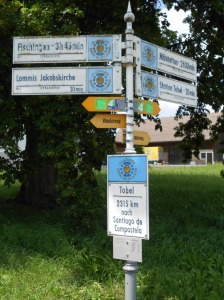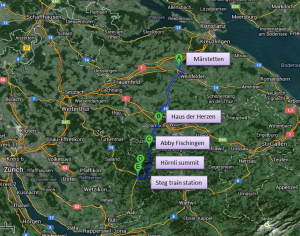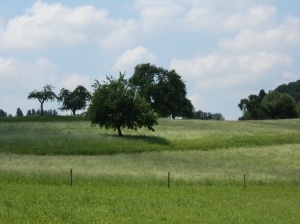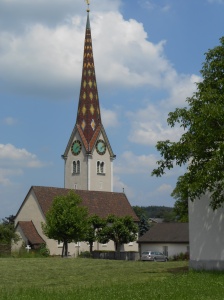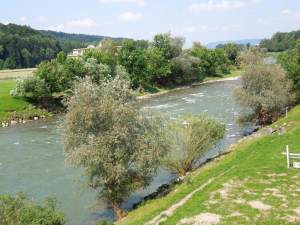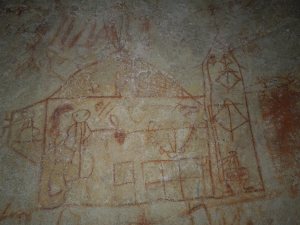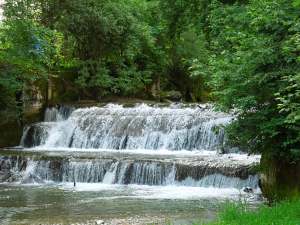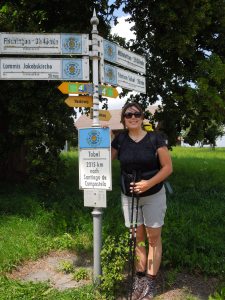 The Azores generously provide a large variety of diverse hiking trips, along the Atlantic ocean’s coast or in the middle of the island through forest thickest that almost makes you forget that you are on a small island in the middle of nowhere basically. Apart from trips to vulcanic crater rims and beautiful views, there are lots of things to see and do on Sao Miguel. Here are some ideas and tips for your next trip to the Azores:
The Azores generously provide a large variety of diverse hiking trips, along the Atlantic ocean’s coast or in the middle of the island through forest thickest that almost makes you forget that you are on a small island in the middle of nowhere basically. Apart from trips to vulcanic crater rims and beautiful views, there are lots of things to see and do on Sao Miguel. Here are some ideas and tips for your next trip to the Azores:
- Cha Gorreana,
- Hot springs and vulcanic meal at Furnas,
- Bathing in a warm waterfall,
- Ecologic pineapple plantage,
- Ponta Delgada shopping mall Parque Atlantico.
Cha Gorreana
Tea, either black or green as the same plant is used for both (also for white tea, by the way) is typically grown in Asia and some names stem from their Asian origin, like Assam or Darjeeling. There is one and only one location in Europe that grows tea and, as you might imagine, this is Sao Miguel. A couple of hundreds of years ago, the local tea was exported mainly to the UK (surprise… :-)). Nowadays it is mostly grown for self-use. For a long time Cha Gorreana was the only tea company and just recently it got some minor competition. Cha Gorreana, both the manure and the plantages, huddle against the gentle slopes of the north coast of Sao Miguel and the tea plants gently sway in the sea breeze.

It is easy to find, normally. For some reason we ended up driving up to Gorreana by a backside gravel road through road holes and a flock of chicken which already got us into farmlife mood.The plantage consists of several houses, one of which contains the whole processing machines, a cafe and souvenir shop. There are also several living houses. The entrance is free, you are aloud to have a look at the whole manufactury and for a small tip, you can visit the local women sorting the leaves.

Flock of hens living at Gorreana

Entrance to Cha Gorreana

One of the machinery needed for tea manufacturing

Lovely ladies sorting the tea leaves

So much tea

Obligatory house cat
You can try the green and black tea produced at Cha Gorreana directly there and also free of charge. If you like it, you can buy some at the souvenir shop. It is cheapest there, but Cha Gorreana tea is also available at supermarkets all over the island. You will notice that the tea is very mild and not so bitter and has a different, more ‘planty’ taste than the standard tea you are used to. It is definitely worth a try and I am actualy having some Gorreana tea I broght with me to Switzerland at this very moment while writing this blog. Her is a pic of the plantage with the sea in the background:

Hot springs and Cozido at Furnas
Furnas, which lies next to Furnas Lake in the middle of the island (see Azores tour #4) is gifted with several hot sulfuric springs due to vulcanic geothermic activities. A collection of several springs with surfacing boiling water can be found just at the vicinity of the village. A small wall keeps visitors from getting too close. Not only the springs are boiling but the ground around is very hot as well. You can take a stroll through the several places where the stinky water reaches the surface (entrance and parking is free) and bath in the sulfuric steam originating from the mini-Geysirs.

 It also seems as if Banksy has been given the Furnas hot springs parking spot a visit as well .
It also seems as if Banksy has been given the Furnas hot springs parking spot a visit as well .
The locals use the geothermic activity to cook a kind of stew. It consists of various (unidentifyable) pieces of meat, several types of sausage including blood sausage and vegetables such as potatoes and carrots. Everything is put in a bag,driven by car from the restaurant’s kitchen to the caldeira, lowered into one of the hot spring and left there for several hours. The result is the typical Sao Miguel Cozido, which you can only try at a choice selection of restaurants in Furnas. Where else can you taste a stew cooked by a vulcano? We went to have Cozido at O Miroma in the center of Furnas. It takes a while when you haven’t pre-ordered, but it’s worth it! The stew is served by two guys that looked like brothers of Elvis the King himself and one of them was even in a photography in our guide (a famous local then?!). This is how the Cozido looks like:

After the Cozido, we felt braced for new adventures and went for Parque Terra Nostra, also in Furnas. This is a park and an old mansion that was formerly a wellness clinic. The novel hotel and spa is currently under renovation and seems to be quite nice once finished. For a small entrance fee, you can have a stroll through the beautifully gardened path that is quite large. The main attraction, however, is the hot swimming pool in front of the old picturesque mansion. It is sourced by a hot spring (of course), built already in 17 hundred cabbage and is between 35 and 40 degree. The water is redish from the large amount of iron ions so make sure to bring a non-white bathing suite (unless you prefer to color it red). Next to the thermal pool are a couple of cabins to change. However, when SandT went there, they did not have any light and were therefore quite dark. Also, I couldn’t find a shower either, so make sure to have some time at the hotel between the thermal pool and going out for the night. Surrounded by the magnificent parkway and with the beautiful mansion in the background, you feel quite regal having a bath in at Parque Terra Nostra.

Bathing in a warm waterfall
If you haven’t had enough yet of thermal bathings, I have another Azorean highlight for you: bathing in a warm waterfall. On the road between Ribeira Grande and Furnas, in a bend, lies the entrance to Caldeira Velha. After a short walk with several construction workers eying suspiciously the few tourists already coming here this early in the year, you reach a forest glade where a warm waterfall falls down into a laguna. The stones are redish of color, again due to the constant iron exposure. You can change in two small wooden huts, but don’t expect too much privacy. The huts are very battered with large wholes and in between two paths – you might as well dress under a towel or, if your are organised, at the hotel. When we went there, few other people came and no one went for a swim. I must say it took some courage to dress and get into the water with every one else just watching and, worse, taking pictures, but once you’re in there, it is amazing! You can walk/swim right to the waterfall which is surrounded by a green canopy of ferns and trees that builds a nice contrast to the rusty-red of the water and the rocks. This experience is best when you have the laguna all to yourself.

I expect there to be much more people during high season. Apparently, the tourist companies organise bus tours to the waterfall and there might even be an entrance fee in the future. But for now, in April devoid of touristy ragtags, this is really a beautiful place!
The ecologic pineapple plantage
The Azores, being rich in fertile earth and rainfalls, have several agricultural hightlights. One is certainly the tea cultivation as described above. There is also an ecologic pineapple plantage in a suburd of Ponta Delgada called Faja de Baixo. When you park there, all you see is a kind of better barn snd lots of green houses. We boldly start ahead and are soon greated by the owner himself. He escorts us into the barn and we are shown an interesting video on the production of pineapples which is really useful as the owner is not incredibly eloquent in his usage of the English language. After the video, he introduces us to his different greenhouses. Each greenhouse hosts pineapples at different developmental stages. Interestingly, they are all brought to blossom at the same time by kindling a fire in the greenhous. The released gas induces the blossoming. It takes two years to grow a pineapple and seems rather meticulous work all an all so I finally start to understand the prices that are charged for one pineapple.

Baby pineapple

Young pineapples plants in the green house
Back in the barn, the owner presents his small shop that sells all kinds of pineapple and farming products, like pineapple jam, pineapple liquor, eggs, honey and so on. We ask him if the pineapple is sweet. “Smell it”, he answers and for sure the fruit smells really sweet and fruity. So, in addition to the jam and the liquor (which turns out to be horribly sweet), we buy a fresh ecologically grown pineapple for almost 5 Euros, which we wanted to enjoy at the hotel room. We almost ceremoniously cut the pineapple and distributed it equally. But it turned out that the fruit was not sweet at all but really really sour. Not really delicious… seems that this guy rather got the better of us naive tourists. I haven’t tried the jam yet, so might be this is more to my taste.

In conclusion, visiting the plantage is definitely interesting and worth it. As the tour is for free, I think it would be just fair enough to buy something from the shop, but maybe narrow your choice down and go for the honey or the bath essence.
Shopping mall Parque Atlantico
If the weather is really shitty or you just crave for standard chinese fast food, you might want to head for the only shopping mall on the Azores: Parque Atlantico. The mall has the typical clothes shops, hairdresser, toy and sweet stores and a large supermarket where you can get good supplies if you are a self-provider or you need some beverages for the hotel room or picknick for the next hiking tour. You can also buy Cha Gorreana there. Best of all, however, is the large food corner in the mall. There is really everything: the typical McD and BurgerKind, a Wok place where you can design your fried rice and noodles yourself, you can get fresh soup of the day or you head for a good Italian restaurant. Coffee is also qauite cheap there. These are still mall restaurants, but as the choice in restaurants and especially cuisine variety is limited, you might want to have something different and quick’n easy, especially when you are around with kids.

So, all in all, I guess you got a good overview over what else to do apart from hiking on Sao Miguel and, once you’re there, enjoy the trip as much as I did! This is all from SandT on Sao Miguel. Watch out for new hiking trips and reports from the next holidays.


 The American author and humorist Mark Twain became famous for writing the Adventures of Tom Sawyer and Huckleberry Finn. He also wrote funny and entertaining short stories on the brink of what became typical holiday tourism these days. Mark Twain and his family spent a summer in the area around Lake Lucerne, in Weggis, in 1879 and he is thrilled about it: “This is the most charming place I have ever lived in!”
The American author and humorist Mark Twain became famous for writing the Adventures of Tom Sawyer and Huckleberry Finn. He also wrote funny and entertaining short stories on the brink of what became typical holiday tourism these days. Mark Twain and his family spent a summer in the area around Lake Lucerne, in Weggis, in 1879 and he is thrilled about it: “This is the most charming place I have ever lived in!”















 Now, ladies and gentlemen, honoured readers, it’s time to go to the rocks – high five!
Now, ladies and gentlemen, honoured readers, it’s time to go to the rocks – high five! 















